There's a lot I like about the Christmas season. Festive decorations. Guilt-free gatherings of friends and family, complete with foods and beverages that are, strictly speaking, not good for one's body. The sense of excitement in the air. And, for Christians, a celebration of a Very Important Event.
Despite this, the season is one that generally fills me with dread. Let me count the ways: first, there's more to do and yet no additional time in which to do it, which increases stress. Second, repetition of seasonal songs, in a mind-numbing number of versions, usually performed in a perfunctory manner, inflicted on an unwary public. (One of our discussions this year was "Holiday songs I never want to hear again," which occasioned a great many variations on "Wonderful choice!") Preparing for guests to stay over. Preparing to drive, usually through heavy traffic, to visit relatives. The hassle of shopping for people who either have everything they need or want nothing more than the universal gift certificate. (Watching people open gift cards is a dull activity, matched only by receiving such a card when there's no way to spend it until the next day at the earliest.)
Lost in all the shuffle are the normal things one would do over the course or a week or two. Most of those things are not important, but some require a certain amount of sacrifice. To wit: as I type this, I have yet to see the Christmas episode of Doctor Who, "The Time of the Doctor." I have had to avoid all discussion of the episode. I'm told some guy named Capaldi shows up in it, but I have no direct knowledge of this. The things I sacrifice for the sake of the season!
Lest anyone think this is merely a litany of complaints, I hasten to add that I genuinely enjoy the company of my relatives. If any of said relatives are reading this, yes, I mean it, and I'm not just saying so for the sake of smoothing some feathers come next Christmas.
Christmas is also the time when, over a few drinks, friends and relatives are liable to share the more interesting, not to mention embarrassing, pieces of gossip. Items that would never be forthcoming over the telephone or via mail (electronic or otherwise), and certainly never hinted at in the Christmas letter that stays resolutely chipper, come lightly off a tongue loosened by liquor. Little Bobby's close encounter with law enforcement after running that red light, or the explanation for why Uncle Fred is not with us this year (still in rehab). One is reminded of the foibles of one's nearest and dearest. My stepmother, a genuinely warm-hearted person, is also increasingly deaf and staunchly unwilling to do anything about it, so she'll take opportunities to turn up the volume on to the point of distraction on the television, and is unaware that the Christmas tree that plays nothing but a tinny version of "Jingle Bells," over and over, is a seasonal version of water torture. My uncle mercilessly baits the woman. And so it goes.
Which brings me to the Christmas Hangover. Oh, you thought the title was a metaphor for the post-holiday letdown? Perhaps it is that as well. But the CH is a genuine phenomenon. Extracting gossip requires not only plying others with drink, but keeping up as well. I'm also convinced that trying to pay attention to multiple conversations, all held at high volume, causes alcohol to be absorbed more quickly into the bloodstream.
This year, my best efforts were destroyed by the confluence of two kind gestures. Back in June, Uncle J__ bought his brother a bottle of Sauternes for the latter's 80th birthday. Said bottle was saved until Christmas, when all of legal drinking age assembled could have a glass of the sweet dessert wine. A temporary madness descended on me, and I forgot my vow forsaking all sweet alcoholic beverages after an unfortunate episode involving Rusty Nails. (To this day I cannot look at a bottle of Drambui without feeling slightly ill.) One glass and - bam! - the next morning was a sad occasion. In fact, I missed most of December 26. If I could have regenerated, I might have done so.
So let this be a cautionary tale to young people with strong constitutions and poor judgment: one day, that strong constitution will be gone, leaving only the poor judgment. When that day arrives, woe betide you. Until then, I envy you.
And now another Christmas has come and gone. For now, only the cleanup remains, itself another form of post-holiday hangover in which decorations return to their cramped little boxes, furniture is moved back to its normal location, and the trash and recycling bins bulge under the onslaught of wrapping paper, boxes, and the remains of that casserole that no one really liked. And in just 51 weeks, we do it all over again.
Saturday, December 28, 2013
Friday, December 20, 2013
Victorian Fantasy: "La Belle Dame sans Merci"
This month’s meeting of the Victorian Fantasy discussion group addressed John Keats’s “pocket epic” poem of 1819, “La Belle Dame sans Merci.” Sir JJ Drinkwater coined that oxymoron, and what an appropriate term it is!
Despite its brief length, a mere twelve stanzas of four lines each, the poem relates a tale in which a traveler encounters a knight, “alone and palely loitering” in a place where “the sedge has withered from the lake, and no birds sing.” The knight then tells of meeting a lady - “full beautiful - faery’s child” - who, “in language strange,” declared her love for him. The lady induces the knight to sleep, where he dreams of “pale kings and princes too, pale warriors, death-pale were they all” who were similarly seduced by the fae lady. He awakes, alone, on the hill where he met the traveler.

The Poetry Foundation describes the poem as follows:

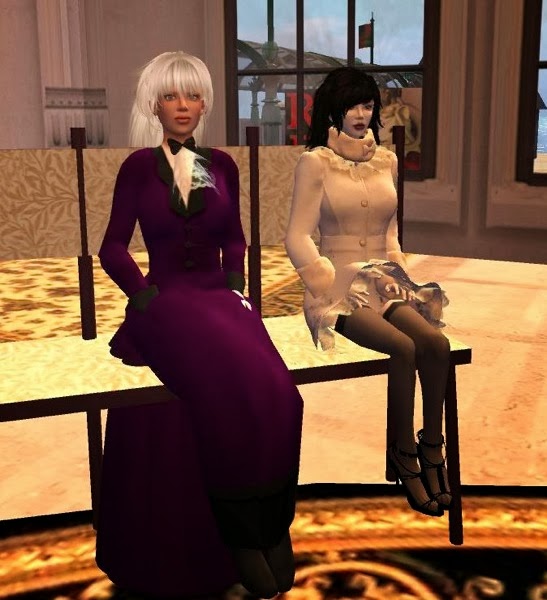
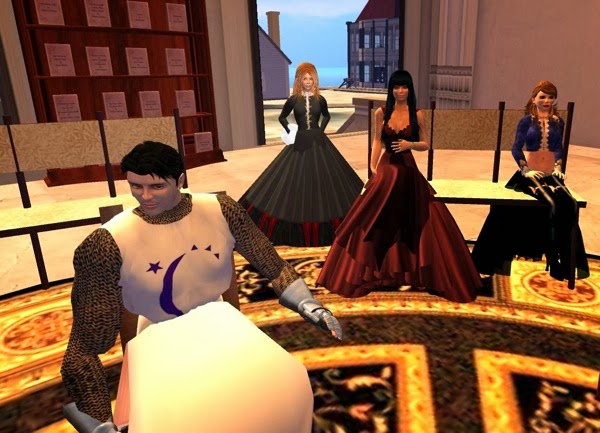
Despite its brief length, a mere twelve stanzas of four lines each, the poem relates a tale in which a traveler encounters a knight, “alone and palely loitering” in a place where “the sedge has withered from the lake, and no birds sing.” The knight then tells of meeting a lady - “full beautiful - faery’s child” - who, “in language strange,” declared her love for him. The lady induces the knight to sleep, where he dreams of “pale kings and princes too, pale warriors, death-pale were they all” who were similarly seduced by the fae lady. He awakes, alone, on the hill where he met the traveler.

Left to right: Dame Kghia Gherardi, Mr. Simeon Beresford, Miss Sanchia Bumblefoot
The Poetry Foundation describes the poem as follows:
This dialectical probing of enchantment, of the always-threatened artifice by which imagination seeks its fulfillment in the world, initiates Keats’s most profound meditations in the spring of 1819. The dangers of enchantment deepen in the haunting, beautifully suggestive ballad, “La Belle Dame sans Merci,” written 21 or 28 April 1819, and published in a slightly altered version by Hunt in his Indicator of 10 May 1820. Here a knight-at-arms is seduced by a strange, fairylike woman, reminiscent of Morgan Le Fay or Merlin’s Niniane, and in the midst of this enchantment a warning dream comes to him from other lost princes and warriors. But his awakening from her does him little good; he wanders “palely” on “the cold hill’s side,” where “no birds sing,” a world as empty of charm as the fay’s was empty of real life. The poem has been seen as allegorical of Keats’s ambivalent feelings for Fanny Brawne or for poetry itself. More fundamental, though, is Keats’s growing sense, here and in his letters, of the dark ironies of life, that is, the ways in which evil and beauty, love and pain, aspiration and finitude, are not so much “balanced” as interwoven in ways that resist philosophical understanding. The more we imagine beauty the more painful our world may seem—and this, in turn, deepens our need for art.

Back row: Miss Janet Rhiadra, Miss Zanicia Chau; Front row: Miss Morgan Trevelion, me
Our group discussed the nature of the knight and of the lady; how much time passed when the knight was with the lady; whether she was seductress or whether it was merely her nature that men fell in love with her; and Keats’s influence (folk ballads) and others who may have been influenced by the poem (Tolkien was one suggestion).

Miss Ravenstask Bayr and Miss Galiena De Tourney

Sir JJ Drinkwater, Miss Herndon Bluebird, Miss Thuja Hynes, Miss Ellie Mink
Other interpretations of the poem may be found here and here, both apparently part of a syllabus from a Citiy University of New York English class.
As one can see from the pictures, we had quite a number of people (plus a few stragglers not pictured), many of whom were familiar with Keats in general and this poem in particular. That made for a good, lively discussion, which is always a treat.
The next meeting is scheduled for January 16, where the topic will be the 1850 novel The King of the Golden River, by John Ruskin.
Saturday, December 14, 2013
The Station and the Dead City
A new(-ish) Steampunk build and RP area, I first learned of The Station from the inimitable Honour McMillan. Above the ground, it’s a floating Steampunk city, with a high-speed train, a Fun House, the Orpheum theater, and more.
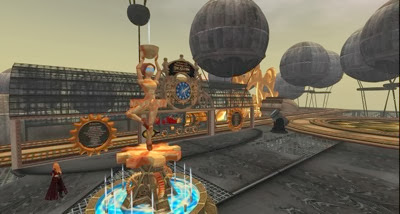
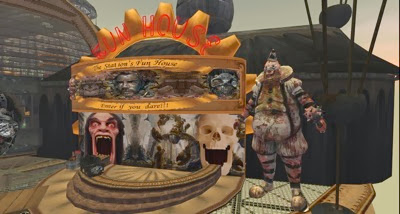
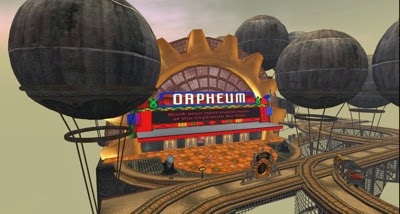
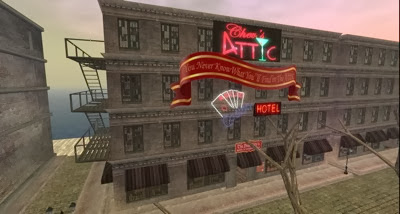



The central area of The Station

The entrance to the Fun House

The Orpheum
On the ground is the Dead City - an older, disheveled part of town, so to speak, but a misnomer because the city isn’t dead at all. To get there, one can take the civilized route - a balloon - or the Fun Ride, a wild, careening shot through a series of tubes. Naturally, I chose the latter.
Below there are a number of other places to visit, including the hotel (with Chev’s Attic, a nightclub, and a ground-floor casino), an amusement pier, and the old Orpheum theater.

The hotel, where rooms by the week are available

The entrance to the amusement pier

Shopping in the Dead City, with a passing trolley
The two cities constitute an RP area. Fortunately for my ability to take pictures, but unfortunately for the continued viability of the area, no one else was there during my visit. It’s an intriguing setup, so I hope it catches on.
Tuesday, December 10, 2013
Review: Sapphire and Steel
Reading about Doctor Who, I saw a number of references to another British television show, Sapphire and Steel, which ran on ITV from 1979 to 1982 and is now available on DVD.
The show follows two “elementals,” Sapphire (Joanna Lumley of The New Avengers and Absolutely Fabulous fame) and Steel (David McCallum, from The Man from U.N.C.L.E. and currently in NCIS). As Sapphire says, “It’s our job to safeguard the structure of time.”* Each story - an “assignment,” in the show’s language, is made up of multiple half-hour episodes. The agents arrive on scene with a vague idea about what’s wrong, and spend the assignment investigating and resolving the issues. This site provides a more thorough description of the series.
Steel is generally grim-faced and, yes, steely, demanding answers from those around him and generally playing the heavy. Sapphire has certain powers to analyze objects and rewind time, and knows about the habits and customs of humans. They are occasionally aided by other agents, namely Lead (a large man who can knock down doors with a single blow) and Silver (a “technician,” rather than an “investigator,” who can manipulate metals and machinery when not flirting with Sapphire).
The show seems to have been shot on a budget of about $25 per episode. There is generally a single set, whether it’s a house (assignments one, four, and five), a train station (assignment two), an apartment building (assignment three), or a gas station-cum-diner (assignment six). The number of speaking parts is limited, and the combination of the single set and limited number of roles gives the show the feel of a staged play.
In Assignment One, creatures are using children’s nursery rhymes to enter the corporeal world. In Assignment Two, a man in a disused train station is attempting to make contact with the spirit world and finds soldiers killed in battle trying to return to life. In Assignment Three, time travelers from far in the future come to 1979 to understand the period - but they with them a force that can influence time. In Assignment Four, Sapphire and Steel investigate a man with no face who can take children out of photographs. In Assignment Five, a 1930-themed dinner party creates a shift in time so that the guests find themselves actually in 1930, where guests are murdered one at a time. In Assignment Six, the time agents are in a gas station in 1981, where a couple from 1948 has arrived in their car. The last two stories are the best, most coherent ones of the series.
One difficulty with the show is that it’s too mysterious for its own good. We never learn what these “elementals” are - certainly not human, despite their form, but also capable of being killed - or who they work for, or how time can get out of whack. We never seen any underlying logic to the show’s universe, so that much of the peril for Sapphire and Steel, and many of the resolutions, seem to come out of thin air. The two leads, Lumley and McCallum, are accomplished actors who try to overcome the often-weak material. The show deserves credit for creating something out of the mainstream, with an intriguing premise, but is ultimately let down by its scripts and its incomplete vision of its own universe.
------------
*No, neither sapphire nor steel are elements.
The show follows two “elementals,” Sapphire (Joanna Lumley of The New Avengers and Absolutely Fabulous fame) and Steel (David McCallum, from The Man from U.N.C.L.E. and currently in NCIS). As Sapphire says, “It’s our job to safeguard the structure of time.”* Each story - an “assignment,” in the show’s language, is made up of multiple half-hour episodes. The agents arrive on scene with a vague idea about what’s wrong, and spend the assignment investigating and resolving the issues. This site provides a more thorough description of the series.
Steel is generally grim-faced and, yes, steely, demanding answers from those around him and generally playing the heavy. Sapphire has certain powers to analyze objects and rewind time, and knows about the habits and customs of humans. They are occasionally aided by other agents, namely Lead (a large man who can knock down doors with a single blow) and Silver (a “technician,” rather than an “investigator,” who can manipulate metals and machinery when not flirting with Sapphire).
The show seems to have been shot on a budget of about $25 per episode. There is generally a single set, whether it’s a house (assignments one, four, and five), a train station (assignment two), an apartment building (assignment three), or a gas station-cum-diner (assignment six). The number of speaking parts is limited, and the combination of the single set and limited number of roles gives the show the feel of a staged play.
In Assignment One, creatures are using children’s nursery rhymes to enter the corporeal world. In Assignment Two, a man in a disused train station is attempting to make contact with the spirit world and finds soldiers killed in battle trying to return to life. In Assignment Three, time travelers from far in the future come to 1979 to understand the period - but they with them a force that can influence time. In Assignment Four, Sapphire and Steel investigate a man with no face who can take children out of photographs. In Assignment Five, a 1930-themed dinner party creates a shift in time so that the guests find themselves actually in 1930, where guests are murdered one at a time. In Assignment Six, the time agents are in a gas station in 1981, where a couple from 1948 has arrived in their car. The last two stories are the best, most coherent ones of the series.
One difficulty with the show is that it’s too mysterious for its own good. We never learn what these “elementals” are - certainly not human, despite their form, but also capable of being killed - or who they work for, or how time can get out of whack. We never seen any underlying logic to the show’s universe, so that much of the peril for Sapphire and Steel, and many of the resolutions, seem to come out of thin air. The two leads, Lumley and McCallum, are accomplished actors who try to overcome the often-weak material. The show deserves credit for creating something out of the mainstream, with an intriguing premise, but is ultimately let down by its scripts and its incomplete vision of its own universe.
------------
*No, neither sapphire nor steel are elements.
Tuesday, November 26, 2013
Review: "The Day of the Doctor" and "The Five(ish) Doctors Reboot"
Spoilers aplenty, so don’t say you weren’t warned. If you haven’t seen the 50th anniversary episode yet, watch it first. No, really, I mean it.
At the risk of adding yet more verbiage to what’s already out there, and repetitive verbiage at that, “The Day of the Doctor” was fantastic. The episode started with the original, black and white opening and theme song. We got an amazing new Doctor in John Hurt - who played the War Doctor as both arrogant and yet desperate to avoid the solution that he sees as the only way to end the Time War -, some explanation for why Queen Elizabeth I doesn’t like the Doctor, more Kate Lethbridge-Stewart in U.N.I.T., some Doctor-on-Doctor banter, a glimpse of Peter Capaldi’s Doctor, a sob-inducing resolution to the Time War, and then, just when you think all the twists are don, a scene with TOM BAKER!
In 80 minutes, we had two interwoven stories: the War Doctor on the last day of the Last Great Time War and his decision to end the war; and a Zygon invasion of Earth, starting in the 16th century and culminating in the present day.
I was sure the resolution of the Time War wouldn’t just be the War Doctor pushing the button, as we were told he did prior to this episode. Having brought viewers into the war, the outcome had to be different. I thought the resolution was when Ten and Eleven said to Hurt (shall we call him Eight Point Five?), “You’re not alone this time,” forgiving him/them from pushing the button - three hands resting on the Moment, ready to activate it. But Clara urges them to rethink the solution and find one that the Doctor - all of them - can live with. They devise a plan to use 13 TARDISes to zap Gallifrey into a pocket universe in order to save its inhabitants and let the Daleks kill one another. Perfect. (Except now we have to search for Gallifrey and bring back those insufferable boors, the Time Lords.)
Better yet, the two key aspects of that solution, the Zygon device to stick people into pictures and the property of the sonic screwdriver to do calculations in the background over a period of centuries, were foreshadowed earlier in the episode in other contexts, so the ending didn’t seem so made up on the spot. Thus, the B plot - the Zygons - was integral to the A plot - the Time War.
My biggest quibble is that we never got a resolution to the Zygon plot. We leave them negotiating something with U.N.I.T., but negotiating what? The Zygons want Earth and the humans aren’t inclined to give it up. Not a lot of room for bargaining in what seems like a zero-sum game. Otherwise, an amazing episode that lived up to all the buildup.
Another superb 50th anniversary show was “The Five(ish) Doctors Reboot,” a half-hour show written and directed by Peter Davison. The title is a takeoff of the 20th anniversary episode, “The Five Doctors” (which itself needed an “-ish” attached to the title, as Tom Baker appeared only through clips from “Shada” and another actor stood in for the late William Hartnell).
The “reboot” is a sweet shout-out to the fans of the classic series, bringing back Davison, Colin Baker, Sylvester McCoy, and, briefly, Paul McGann. It’s best to think of them as playing actors who once portrayed the Fifth, Sixth, Seventh, and Eighth Doctors. Davison, Baker, and McCoy all want to wrangle roles in the 50th anniversary episode but no one will cast them in the show. (Steven Moffat plays himself, frustrated with their repeated calls, and Russell T. Davies appears later on.) Davison induces the others to picket BBC’s Television Centre, to complete indifference from passers-by. John Barrowman arrives, telling them the show is now made in Cardiff. After an amusing bit playing off his sexual orientation, Barrowman takes them to Wales. They swiped their old costumes from The Doctor Who Experience, sneak onto the set, and… well, you’ll have to watch to see if they’re successful.
The number of in-jokes and cameo appearances by actors who have appeared in Doctor Who - David Tennant, Georgia Moffett, Lisa Bowerman, Nicholas Pegg, and more - along with sons of both Patrick Troughton and Jon Pertwee, were enough to satisfy the nerdiest fan of the classic series. The actors were willing to poke fun at themselves as being obsessed with participating in the show. (One might also think they were poking fun at fans obsessed with seeing older Doctors in the anniversary show.) McCoy has a running gag about appearing in The Hobbit, Davison’s grandkids are unimpressed with his past as the Doctor, and Tennant forgets to ask his wife (Moffett) how it’s going as she is giving birth. Well done, and kudos to those involved for making it.
Add to that the two mini-episodes, “The Night of the Doctor” and “The Last Day,” and it was a great anniversary celebration. I can’t wait for number 100.*
*By then I hope that modern medicine will have found a way to keep me going in my late 90s.
At the risk of adding yet more verbiage to what’s already out there, and repetitive verbiage at that, “The Day of the Doctor” was fantastic. The episode started with the original, black and white opening and theme song. We got an amazing new Doctor in John Hurt - who played the War Doctor as both arrogant and yet desperate to avoid the solution that he sees as the only way to end the Time War -, some explanation for why Queen Elizabeth I doesn’t like the Doctor, more Kate Lethbridge-Stewart in U.N.I.T., some Doctor-on-Doctor banter, a glimpse of Peter Capaldi’s Doctor, a sob-inducing resolution to the Time War, and then, just when you think all the twists are don, a scene with TOM BAKER!
In 80 minutes, we had two interwoven stories: the War Doctor on the last day of the Last Great Time War and his decision to end the war; and a Zygon invasion of Earth, starting in the 16th century and culminating in the present day.
I was sure the resolution of the Time War wouldn’t just be the War Doctor pushing the button, as we were told he did prior to this episode. Having brought viewers into the war, the outcome had to be different. I thought the resolution was when Ten and Eleven said to Hurt (shall we call him Eight Point Five?), “You’re not alone this time,” forgiving him/them from pushing the button - three hands resting on the Moment, ready to activate it. But Clara urges them to rethink the solution and find one that the Doctor - all of them - can live with. They devise a plan to use 13 TARDISes to zap Gallifrey into a pocket universe in order to save its inhabitants and let the Daleks kill one another. Perfect. (Except now we have to search for Gallifrey and bring back those insufferable boors, the Time Lords.)
Better yet, the two key aspects of that solution, the Zygon device to stick people into pictures and the property of the sonic screwdriver to do calculations in the background over a period of centuries, were foreshadowed earlier in the episode in other contexts, so the ending didn’t seem so made up on the spot. Thus, the B plot - the Zygons - was integral to the A plot - the Time War.
My biggest quibble is that we never got a resolution to the Zygon plot. We leave them negotiating something with U.N.I.T., but negotiating what? The Zygons want Earth and the humans aren’t inclined to give it up. Not a lot of room for bargaining in what seems like a zero-sum game. Otherwise, an amazing episode that lived up to all the buildup.
Another superb 50th anniversary show was “The Five(ish) Doctors Reboot,” a half-hour show written and directed by Peter Davison. The title is a takeoff of the 20th anniversary episode, “The Five Doctors” (which itself needed an “-ish” attached to the title, as Tom Baker appeared only through clips from “Shada” and another actor stood in for the late William Hartnell).
The “reboot” is a sweet shout-out to the fans of the classic series, bringing back Davison, Colin Baker, Sylvester McCoy, and, briefly, Paul McGann. It’s best to think of them as playing actors who once portrayed the Fifth, Sixth, Seventh, and Eighth Doctors. Davison, Baker, and McCoy all want to wrangle roles in the 50th anniversary episode but no one will cast them in the show. (Steven Moffat plays himself, frustrated with their repeated calls, and Russell T. Davies appears later on.) Davison induces the others to picket BBC’s Television Centre, to complete indifference from passers-by. John Barrowman arrives, telling them the show is now made in Cardiff. After an amusing bit playing off his sexual orientation, Barrowman takes them to Wales. They swiped their old costumes from The Doctor Who Experience, sneak onto the set, and… well, you’ll have to watch to see if they’re successful.
The number of in-jokes and cameo appearances by actors who have appeared in Doctor Who - David Tennant, Georgia Moffett, Lisa Bowerman, Nicholas Pegg, and more - along with sons of both Patrick Troughton and Jon Pertwee, were enough to satisfy the nerdiest fan of the classic series. The actors were willing to poke fun at themselves as being obsessed with participating in the show. (One might also think they were poking fun at fans obsessed with seeing older Doctors in the anniversary show.) McCoy has a running gag about appearing in The Hobbit, Davison’s grandkids are unimpressed with his past as the Doctor, and Tennant forgets to ask his wife (Moffett) how it’s going as she is giving birth. Well done, and kudos to those involved for making it.
Add to that the two mini-episodes, “The Night of the Doctor” and “The Last Day,” and it was a great anniversary celebration. I can’t wait for number 100.*
*By then I hope that modern medicine will have found a way to keep me going in my late 90s.
Friday, November 22, 2013
Victorian Fantasy: Christina Rossetti's "Goblin Market"
Having missed last month’s meeting of the Victorian Fantasy discussion group, on J. M. Barrie’s Peter Pan, as I was out of town that day, I was happy to be back this month to discuss Christina Rossetti’s poem “Goblin Market.” Although fewer attended than usual, there was a lively discussion from a mix of regular members and newcomers.
Rossetti, sister of pre-Raphaelite artist Dante Gabriel Rossetti (who prepared illustrations for his sister’s 1862 book Goblin Market and Other Poems), publicly claimed that the poem was intended for children, while privately saying the opposite. The poem certainly contains vivid sensual imagery, starting with a lengthy description of the ripe fruit the goblins are selling, fruit that is “Sweet to tongue and sound to eye.” Two sisters listen to the goblins calling out while hiding from them. Lizzie “veil’d her blushes” though the sisters had “tingling cheeks and finger tips” at the men.
Despite warning Lizzie that the sisters “must not look at goblin men” or “buy their fruits” as “Who knows upon what soil they fed their hungry thirsty roots?”, Laura does look, and is tempted by the goblins’ wares. Although Laura has no money, the goblins ask for nothing but a lock of her hair and she gorges herself on their fruit. Later, though she wants to return to the market for more, she can no longer hear the goblins and begins to waste away. In desperation, Lizzie returns to the market to buy fruit for her sister. The goblins, upon hearing that the fruit is not for her, viciously assault Lizzie and attempt to force their fruit upon her. She resists. Returning home, Laura tastes the juices of the fruit left on Lizzie and, though now repulsed by the taste, Laura is restored to health the next morning.
Although the discussion focused on the sensual, even sexual imagery in the text and the view that the poem is a metaphor for relations between men and women, some suggested alternative explanations, including the idea that the aggressive goblins represented advertising methods of the time, or that the poem was about sisterly love, or even the possibility that, as Rossetti claimed publicly, that the poem was meant for children and that the story was a tale to amuse and scare the young. In any event, all seemed to enjoy the work and the multiple possible interpretations of it.
Participating in the discussion were:
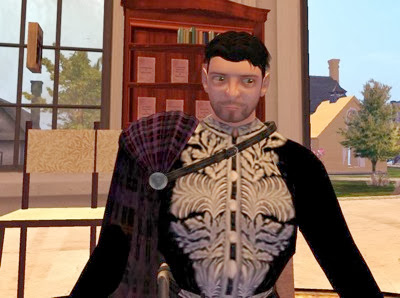

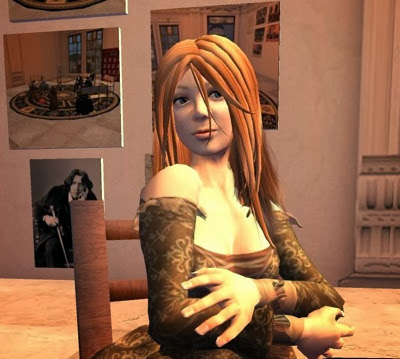



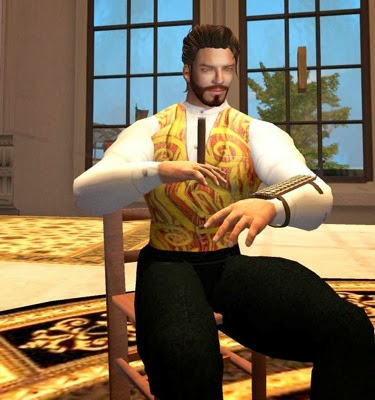
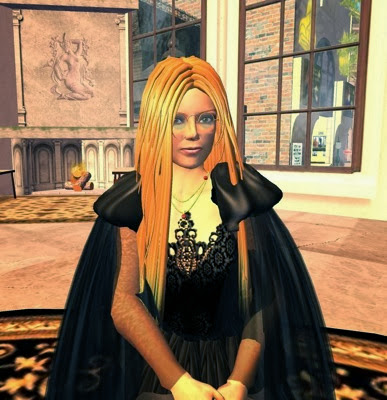
Rossetti, sister of pre-Raphaelite artist Dante Gabriel Rossetti (who prepared illustrations for his sister’s 1862 book Goblin Market and Other Poems), publicly claimed that the poem was intended for children, while privately saying the opposite. The poem certainly contains vivid sensual imagery, starting with a lengthy description of the ripe fruit the goblins are selling, fruit that is “Sweet to tongue and sound to eye.” Two sisters listen to the goblins calling out while hiding from them. Lizzie “veil’d her blushes” though the sisters had “tingling cheeks and finger tips” at the men.
Despite warning Lizzie that the sisters “must not look at goblin men” or “buy their fruits” as “Who knows upon what soil they fed their hungry thirsty roots?”, Laura does look, and is tempted by the goblins’ wares. Although Laura has no money, the goblins ask for nothing but a lock of her hair and she gorges herself on their fruit. Later, though she wants to return to the market for more, she can no longer hear the goblins and begins to waste away. In desperation, Lizzie returns to the market to buy fruit for her sister. The goblins, upon hearing that the fruit is not for her, viciously assault Lizzie and attempt to force their fruit upon her. She resists. Returning home, Laura tastes the juices of the fruit left on Lizzie and, though now repulsed by the taste, Laura is restored to health the next morning.
Although the discussion focused on the sensual, even sexual imagery in the text and the view that the poem is a metaphor for relations between men and women, some suggested alternative explanations, including the idea that the aggressive goblins represented advertising methods of the time, or that the poem was about sisterly love, or even the possibility that, as Rossetti claimed publicly, that the poem was meant for children and that the story was a tale to amuse and scare the young. In any event, all seemed to enjoy the work and the multiple possible interpretations of it.
Participating in the discussion were:

Sir JJ Drinkwater

Dame Kghia Gherardi

Miss Janet Riadra

Miss Sanchia Bumblefoot

Miss Curious Sciurus (foreground)

Mr. Michael Romani

Mr. David Raymondson, typing on his clever keyboard while also smoking a cigar

Your humble author
Wednesday, November 20, 2013
Number Eight and "Night of the Doctor"
Although anyone who really cares has no doubt already seen and analyzed in painstaking detail “The Night of the Doctor,” I’ll add my few cents.
This mini-episode, a prequel to the 50th anniversary episode of Doctor Who (cleverly entitled “The Day of the Doctor” - the link is to a trailer for the episode), which arrived a week earlier than planned, according to Paul McGann, because it was about to be leaked, provides a little more context for the 50th anniversary episode. More importantly, however, it provides a connection between the series’ past - particularly Paul McGann’s Eighth Doctor - and the current incarnation of the series. It also incorporates the Big Finish audio stories into the Doctor Who canon in a dramatic way. As a fan of both McGann and the Big Finish stories, I was grateful for the mini-episode.
To recap: when we last saw Paul McGann on television as the Doctor, in the 1996 movie Doctor Who, he had regenerated from the Seventh Doctor and saved the world from yet another crazy plan by the Master. Along the way, he had a make-out session with Dr. Grace Holloway (Daphne Ashbrook), who turned down his offer to travel with him. Although the movie never developed into a back-door pilot for a new Who series, thanks largely to abysmal ratings in the U.S., and is generally panned because of its lousy plot, starting with the initial voice-over, in which the Doctor explains how he was on his way back to Gallifrey from Skaro - say, wasn’t the planet blown up in “Remembrance of the Daleks”?) with the remains of the Master (the Doctor seemed an unlikely emissary, as enemy of both the Daleks and the Master), whom the Daleks had put on trial and executed (trial? Daleks? Since when have they had a measured judicial system?). Nevertheless, many people, including me, thought McGann made a terrific Doctor, nailing the character from the beginning, and looking the part, wig and Wild Bill Hickok outfit not withstanding. It was a real shame we didn’t see more of him.
Big Finish, however, obliged the fans. In both the Main Range of stories, with companion Charlotte “Charley” Pollard (India Fisher), and in the Eighth Doctor Adventures, with companion Lucie Miller (Sheridan Smith), McGann took his Doctor on all manner of adventures.
When the television series resumed in 2005, it started with the Ninth Doctor in mid-adventure. The series never explained what happened to the Eighth. Obsessive fans like closure, and fans of Eight didn’t get it. Until now.
The new series had hints of the Last Great Time War, with the Doctor, especially the Ninth, clearly agonized over his role in ending the war, causing the destruction of both the Daleks and the Time Lords. It seems clear that “The Day of the Doctor” will take us to that moment, when John Hurt’s “War Doctor” makes the decision to use a terrible weapon to end the war. (As an aside, and we’ll see what happens in a few days, my guess is that he won’t destroy both races, and we’ll have undone all of the last seven seasons’ worth of history. Sigh. Sometimes I don’t like the way the series relies on a convenient “Reset” button, in which all is undone.)
Which brings us to “The Night of the Doctor.” I would insert a “spoiler” warning, but the one or two out there who (a) care and (b) haven’t seen the mini-episode already should have clicked on the link above and watched it. We see a spaceship in distress, about to crash on a planet, with one human left aboard. The Doctor arrives, offering to take the survivor, Cass, with him. Upon seeing the TARDIS, she realizes that he is a Time Lord and, so repulsed is she at the damage the Time Lords have done during the war, she refuses to go. He says he won’t go without her (the one false note in the episode), and the ship crashes and explodes. The planet turns out to be Karn, from “The Brain of Morbius,” and the Doctor once again meets the Sisterhood of Karn. One of the Sisters informs him that he is dead, that they have resurrected him briefly, and they can offer him a directed regeneration, so that he can choose what kind of man he will be. The Doctor says he doesn’t want to fight in the Time War, but the Sister points out that he no longer has that option. He tells her that he needs to be “a warrior.” The Sister, having anticipated that answer, has already prepared the appropriate elixir. He drinks it, calling out to his former companions, including Charley and Lucie, and the now-familiar regeneration process starts.
An amazing job done in six-and-a-half minutes. Thank you, Paul McGann, for coming back and playing the role on television for us one more time.
This mini-episode, a prequel to the 50th anniversary episode of Doctor Who (cleverly entitled “The Day of the Doctor” - the link is to a trailer for the episode), which arrived a week earlier than planned, according to Paul McGann, because it was about to be leaked, provides a little more context for the 50th anniversary episode. More importantly, however, it provides a connection between the series’ past - particularly Paul McGann’s Eighth Doctor - and the current incarnation of the series. It also incorporates the Big Finish audio stories into the Doctor Who canon in a dramatic way. As a fan of both McGann and the Big Finish stories, I was grateful for the mini-episode.
To recap: when we last saw Paul McGann on television as the Doctor, in the 1996 movie Doctor Who, he had regenerated from the Seventh Doctor and saved the world from yet another crazy plan by the Master. Along the way, he had a make-out session with Dr. Grace Holloway (Daphne Ashbrook), who turned down his offer to travel with him. Although the movie never developed into a back-door pilot for a new Who series, thanks largely to abysmal ratings in the U.S., and is generally panned because of its lousy plot, starting with the initial voice-over, in which the Doctor explains how he was on his way back to Gallifrey from Skaro - say, wasn’t the planet blown up in “Remembrance of the Daleks”?) with the remains of the Master (the Doctor seemed an unlikely emissary, as enemy of both the Daleks and the Master), whom the Daleks had put on trial and executed (trial? Daleks? Since when have they had a measured judicial system?). Nevertheless, many people, including me, thought McGann made a terrific Doctor, nailing the character from the beginning, and looking the part, wig and Wild Bill Hickok outfit not withstanding. It was a real shame we didn’t see more of him.
Big Finish, however, obliged the fans. In both the Main Range of stories, with companion Charlotte “Charley” Pollard (India Fisher), and in the Eighth Doctor Adventures, with companion Lucie Miller (Sheridan Smith), McGann took his Doctor on all manner of adventures.
When the television series resumed in 2005, it started with the Ninth Doctor in mid-adventure. The series never explained what happened to the Eighth. Obsessive fans like closure, and fans of Eight didn’t get it. Until now.
The new series had hints of the Last Great Time War, with the Doctor, especially the Ninth, clearly agonized over his role in ending the war, causing the destruction of both the Daleks and the Time Lords. It seems clear that “The Day of the Doctor” will take us to that moment, when John Hurt’s “War Doctor” makes the decision to use a terrible weapon to end the war. (As an aside, and we’ll see what happens in a few days, my guess is that he won’t destroy both races, and we’ll have undone all of the last seven seasons’ worth of history. Sigh. Sometimes I don’t like the way the series relies on a convenient “Reset” button, in which all is undone.)
Which brings us to “The Night of the Doctor.” I would insert a “spoiler” warning, but the one or two out there who (a) care and (b) haven’t seen the mini-episode already should have clicked on the link above and watched it. We see a spaceship in distress, about to crash on a planet, with one human left aboard. The Doctor arrives, offering to take the survivor, Cass, with him. Upon seeing the TARDIS, she realizes that he is a Time Lord and, so repulsed is she at the damage the Time Lords have done during the war, she refuses to go. He says he won’t go without her (the one false note in the episode), and the ship crashes and explodes. The planet turns out to be Karn, from “The Brain of Morbius,” and the Doctor once again meets the Sisterhood of Karn. One of the Sisters informs him that he is dead, that they have resurrected him briefly, and they can offer him a directed regeneration, so that he can choose what kind of man he will be. The Doctor says he doesn’t want to fight in the Time War, but the Sister points out that he no longer has that option. He tells her that he needs to be “a warrior.” The Sister, having anticipated that answer, has already prepared the appropriate elixir. He drinks it, calling out to his former companions, including Charley and Lucie, and the now-familiar regeneration process starts.
An amazing job done in six-and-a-half minutes. Thank you, Paul McGann, for coming back and playing the role on television for us one more time.
Monday, November 18, 2013
Aether Salon - Servants
This month’s Aether Salon saw a talk on the topic of servants by Miss Lisa Fargazer. Miss Fargazer currently holds the position of maid-of-all-work at the Murgam Asylum and demonstrated a great deal of knowledge about the types of positions and types of work available to a servant in the late 19th century.
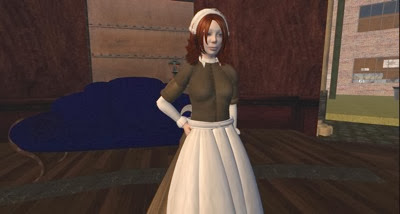 Miss Fargazer
Miss Fargazer
 Miss Fargazer
Miss Fargazer
She observed that the servant class was numerous - about 5% of the population of Wales in 1981, according to a survey - and mainly female (96%) inside the house, and often young, between the ages of 10 and 15. Most of the servants were in great houses, which had an entire hierarchy of servants, ranging from the Land Steward and House Steward, to the Upper Staff, which consisted of the Butler, Housekeeper, Cook, Lady’s Maid, and Valet, to the Lower Staff, including Footmen, Chamber Maids, Parlor Maids, House Maids, Between Maids, Kitchen Maids, and Scullery Maids. New servants were found through word-of-mouth, servant registries, or advertisements. After the initial position, a servant needed good references for subsequent positions.
In contrast, the middle class households generally had a single servant, a maid-of-all-work. More affluent households would perhaps have a cook or nursemaid. A maid-of-all-work might be a young girl from a workhouse, but in any event would have a staggering variety of work to do, from morning until evening.
As a personal observation, the variety of inexpensive labor-saving devices available today not only reduces the call for this kind of labor, but reduces the burden on the lower class. One does not have to be affluent to afford a washer and dryer, for example, or access to a laundromat. This is quite a Good Thing.
Thursday, November 14, 2013
Review: Doctor Who, "Dalek" and "Jubilee"
After watching “Dalek” recently, I listened to “Jubilee,” the Big Audio drama that inspired “Dalek,” the following day. The juxtaposition made for an interesting comparison.
In “Dalek,” the Ninth Doctor and Rose respond to a signal that takes them to the museum of a collector of alien artifacts. The prize of his collection is a damaged Dalek, a survivor of the Time War. The Dalek is kept in chains and tortured to talk, but it remains resolutely mute until it identifies the Doctor, at which point its instinct is to kill the Doctor. When Rose touches the Dalek, it absorbs her DNA, which both restores it to working order and corrupts it. After a rampage through the museum, killing almost everyone there, the Dalek finds that it can’t kill Rose and is ashamed of how it has developed this weakness. Lacking orders from a superior Dalek, it asks Rose to order it to self-destruct. She does so.
In “Jubilee,” the Sixth Doctor and Evelyn Smythe land initially in England in 1903, though the TARDIS won’t stay there. Ultimately, the two are left a century later, in an England that has fought the Daleks in 1903 and, with the help of the Doctor and Evelyn, won. (They have no memory of it, however, suggesting the 1903 events may take place in their future.) However, this England is a fascist empire with a cruel President. The President has a damaged Dalek, captured in 1903 by the current President’s great-grandfather. That Dalek, like the one in the TV episode, won’t speak even under torture. Also like the TV episode, the Dalek has had no orders from its superiors for a long time. As it is a soldier Dalek, it can only obey orders, not give them, and the lack of instructions has driven it mad. The President, to commemorate the 100th anniversary of the defeat of the Daleks, plans to execute the last one publicly. At the same time, the President’s wife has hatched a plan to kill her husband and, with the help of the Dalek, rule in his place. The events of 1903 begin bleeding into the present day, leading to a full Dalek battle fleet arriving in England. The damaged Dalek, despite new orders from the Dalek Supreme, is unwilling to kill Evelyn, the only human to have shown it mercy. When the other Daleks eventually kill it, the corrupted time line collapses.
While the TV episode focused on how Rose’s DNA caused the Dalek to mutate in a way that it found unacceptable, the audio drama was more interested in the question of free will (as well as showing how the Daleks’ motivation to extinguish all other forms of life was ultimately pointless, as a culture attuned to conquest would always be looking for the next conquest, even if it had to do so among its own people - the English Empire illustrated that).
Filming “Jubilee” with the Ninth Doctor and Rose would have been impossible in a single episode, so I understand why they drastically re-wrote the plot. Yet the extra time available for the audio drama and the freedom from having to appeal to children as well as adults created the freedom to explore issues in a deeper way. Ultimately, the issue of free will among soldiers is the more interesting one.
In “Dalek,” the Ninth Doctor and Rose respond to a signal that takes them to the museum of a collector of alien artifacts. The prize of his collection is a damaged Dalek, a survivor of the Time War. The Dalek is kept in chains and tortured to talk, but it remains resolutely mute until it identifies the Doctor, at which point its instinct is to kill the Doctor. When Rose touches the Dalek, it absorbs her DNA, which both restores it to working order and corrupts it. After a rampage through the museum, killing almost everyone there, the Dalek finds that it can’t kill Rose and is ashamed of how it has developed this weakness. Lacking orders from a superior Dalek, it asks Rose to order it to self-destruct. She does so.
In “Jubilee,” the Sixth Doctor and Evelyn Smythe land initially in England in 1903, though the TARDIS won’t stay there. Ultimately, the two are left a century later, in an England that has fought the Daleks in 1903 and, with the help of the Doctor and Evelyn, won. (They have no memory of it, however, suggesting the 1903 events may take place in their future.) However, this England is a fascist empire with a cruel President. The President has a damaged Dalek, captured in 1903 by the current President’s great-grandfather. That Dalek, like the one in the TV episode, won’t speak even under torture. Also like the TV episode, the Dalek has had no orders from its superiors for a long time. As it is a soldier Dalek, it can only obey orders, not give them, and the lack of instructions has driven it mad. The President, to commemorate the 100th anniversary of the defeat of the Daleks, plans to execute the last one publicly. At the same time, the President’s wife has hatched a plan to kill her husband and, with the help of the Dalek, rule in his place. The events of 1903 begin bleeding into the present day, leading to a full Dalek battle fleet arriving in England. The damaged Dalek, despite new orders from the Dalek Supreme, is unwilling to kill Evelyn, the only human to have shown it mercy. When the other Daleks eventually kill it, the corrupted time line collapses.
While the TV episode focused on how Rose’s DNA caused the Dalek to mutate in a way that it found unacceptable, the audio drama was more interested in the question of free will (as well as showing how the Daleks’ motivation to extinguish all other forms of life was ultimately pointless, as a culture attuned to conquest would always be looking for the next conquest, even if it had to do so among its own people - the English Empire illustrated that).
Filming “Jubilee” with the Ninth Doctor and Rose would have been impossible in a single episode, so I understand why they drastically re-wrote the plot. Yet the extra time available for the audio drama and the freedom from having to appeal to children as well as adults created the freedom to explore issues in a deeper way. Ultimately, the issue of free will among soldiers is the more interesting one.
Tuesday, November 12, 2013
Into the Well
Loki Eliot, one of New Babbage’s long-time urchins and the creator of several interactive mysteries that take place within New Babbage under the umbrella title of the Babbage Chronicles, has a new eerie adventure called The Well: Sollicitus. It is a sequel to The Well from 2012.
In the original adventure,

The tunnels are tight and claustrophobic, containing branches on each level. Adding to the atmosphere, the tunnels contain small, shadowy creatures. Avoid them, as touching one flashes an unsettling image on your display and reduces your level of “sanity.” Run out of sanity, and you restart the game.
The experience requires a HUD for the modest sum of $L100. The HUD serves several functions: providing narration at key points, teleporting you to different points in the tunnels, providing the choices the monsters offer, and monitoring the level of “sanity."
Through some good luck, it didn’t take me all that long to complete the game, so it’s not a huge commitment of time. I found it fairly creepy, and keeping an eye on the “sanity” level added to the tension. My one suggestion for the next adventure is that the choices be related to clues you pick up along the way. As it was, the choices seemed fairly arbitrary. That’s a small quibble, however, in what was an exciting game.
The adventure starts here.
In the original adventure,
The idea is that a boy fell down a well, a rescue team was sent down rescue the boy but have not been heard of since. You then must go down and find out what has happened. You find a walkie talkie and communicate with a lone survivor of the rescue team who sort of guides you through the tunnels.This time,
The story is that a year after the events of last 2012, a team of scientific investigators are sent down the well to understand the caves strange geology and maybe find a clue to why the rescue team and a young boy disappeared with no trace. You arrive a day later than the rest of the team to find the make shift lab abandoned.You explore the caves, encountering what may be the spirit of the young boy, who provides you with information. Your role is to find three monsters, “defeating” each of them by choosing the correct image out of three offered. Choose correctly, and you find yourself teleported closer to your goal; choose incorrectly, and you find yourself back at the top of the well.

The tunnels are tight and claustrophobic, containing branches on each level. Adding to the atmosphere, the tunnels contain small, shadowy creatures. Avoid them, as touching one flashes an unsettling image on your display and reduces your level of “sanity.” Run out of sanity, and you restart the game.
The experience requires a HUD for the modest sum of $L100. The HUD serves several functions: providing narration at key points, teleporting you to different points in the tunnels, providing the choices the monsters offer, and monitoring the level of “sanity."
Through some good luck, it didn’t take me all that long to complete the game, so it’s not a huge commitment of time. I found it fairly creepy, and keeping an eye on the “sanity” level added to the tension. My one suggestion for the next adventure is that the choices be related to clues you pick up along the way. As it was, the choices seemed fairly arbitrary. That’s a small quibble, however, in what was an exciting game.
The adventure starts here.
Thursday, November 7, 2013
The Thought Police
One of my favorite podcasts is the science fiction-focused "The Incomparable," in which Macworld's Jason Snell leads a rotating group of guests in a discussion of movies, books, and comics. I've picked up several good books from recommendations on the podcast - notably Erin Morgenstern's The Night Circus - and generally enjoy the banter of the group.
However, in episode No. 166, "I Assume Everyone is Awful," the first third or so of the discussion is cringe-inducing. The topic is whether one should avoid the work of controversial artists because of their personal actions. This was prompted by the current kerfuffle over Ender's Game and author Orson Scott Card's statements opposing gay marriage. (As Card is a Mormon, perhaps that position shouldn't be seen as controversial.) Should supporters of gay marriage decline to see the movie?
To be sure, people are free to decline to see a movie, or to opt not to read a book, for any reason at all. At least one panelist, Scott McNulty, had the sensible view that the less he knows about what artists think and do in their personal lives, the better off he is, as such knowledge rarely adds to, and frequently detracts from, appreciation of the art. However, at least some on the panel made no distinction between an (alleged) child molester (Michael Jackson), a convicted child rapist (Roman Polanski), a guy who doesn't believe gays should marry (Card), and a guy with mental illness (Van Gogh). Card's sin is "espousing beliefs that are exclusionary to others," i.e., being politically incorrect. (Someone even admitted to being upset that Little House on the Prairie author Laura Ingalls Wilder was a libertarian? Really? Belief in individualism and limited government is upsetting? Talk about living a sheltered life!) Don't see "Ender's Game" if it makes you feel better, but please, don't suggest that offending people is equivalent to sexual abuse.
In a later display of a silly politically correct position, Jason Snell objects to a line in Ender's Game that girls don't do as well in battle school because of "centuries of evolution." I'm no expert in warfare, and, not having read the book, I don't know what goes on in "battle school," but is it really a stretch to suggest that the gender that's larger, more muscular, and packed with testosterone might have some advantages in an area that sometimes requires strength and/or aggression?
Fortunately, the podcast got better when the discussion started in on authors or book series that people lost interest in because of the quality of the work. "I'm passing on the twelfth book in the Dune series because numbers four through eleven weren't very good" seems like a much better reason than "I don't like Frank Herbert's vote in the '64 election." (In a terrific dig at the original Dune novel, someone said "It really picked up after about page 300.")
However, in episode No. 166, "I Assume Everyone is Awful," the first third or so of the discussion is cringe-inducing. The topic is whether one should avoid the work of controversial artists because of their personal actions. This was prompted by the current kerfuffle over Ender's Game and author Orson Scott Card's statements opposing gay marriage. (As Card is a Mormon, perhaps that position shouldn't be seen as controversial.) Should supporters of gay marriage decline to see the movie?
To be sure, people are free to decline to see a movie, or to opt not to read a book, for any reason at all. At least one panelist, Scott McNulty, had the sensible view that the less he knows about what artists think and do in their personal lives, the better off he is, as such knowledge rarely adds to, and frequently detracts from, appreciation of the art. However, at least some on the panel made no distinction between an (alleged) child molester (Michael Jackson), a convicted child rapist (Roman Polanski), a guy who doesn't believe gays should marry (Card), and a guy with mental illness (Van Gogh). Card's sin is "espousing beliefs that are exclusionary to others," i.e., being politically incorrect. (Someone even admitted to being upset that Little House on the Prairie author Laura Ingalls Wilder was a libertarian? Really? Belief in individualism and limited government is upsetting? Talk about living a sheltered life!) Don't see "Ender's Game" if it makes you feel better, but please, don't suggest that offending people is equivalent to sexual abuse.
In a later display of a silly politically correct position, Jason Snell objects to a line in Ender's Game that girls don't do as well in battle school because of "centuries of evolution." I'm no expert in warfare, and, not having read the book, I don't know what goes on in "battle school," but is it really a stretch to suggest that the gender that's larger, more muscular, and packed with testosterone might have some advantages in an area that sometimes requires strength and/or aggression?
Fortunately, the podcast got better when the discussion started in on authors or book series that people lost interest in because of the quality of the work. "I'm passing on the twelfth book in the Dune series because numbers four through eleven weren't very good" seems like a much better reason than "I don't like Frank Herbert's vote in the '64 election." (In a terrific dig at the original Dune novel, someone said "It really picked up after about page 300.")
Saturday, October 26, 2013
Combinations
A little while back, I found myself in Atlantic City, in the Trump Taj Mahal, so I did the only logical thing: I had a drink at a bar. Robert's Steakhouse was having its happy hour, with discounts on a dozen or so cocktails. How could one go wrong with "Robert's Martini"?
I'll confess I was surprised. I enjoy Pernod, Macallan whisky, and Plymouth gin as much as the next debauched Steampunk,… but together? It was proof that, unlike chocolate and peanut butter, sometimes good things are not meant to go with one another.
I'll confess I was surprised. I enjoy Pernod, Macallan whisky, and Plymouth gin as much as the next debauched Steampunk,… but together? It was proof that, unlike chocolate and peanut butter, sometimes good things are not meant to go with one another.
Thursday, October 24, 2013
Return to Mulberry
You exit the dark tunnel to find yourself in a small town. It seems deserted. Walking by crumbling buildings and sagging fences, you judge that no one has cared for the town in quite some time, even if the place appeared to be populated until recently. Next to the school, on the ground, lie body bags, all occupied. As you continue to explore the town, however, you discover that those souls have not departed - not entirely, at least... The school, the rail station, the carnival - all are haunted by those who have met violent deaths. Your unease grows. Is the killer still there?
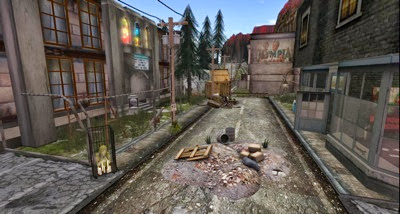
Mulberry - The Abandoned is a reworking of the haunted town I visited several years ago. The owner and designer, Mr. Lou Mannock, kindly invited me back to see the changes. Whereas much of the action in the old build took place in the woods, here the town is the center of attention.Everywhere where is evidence of ghastly happenings, both in the physical world and beyond.

Mulberry is open through Nov. 6.


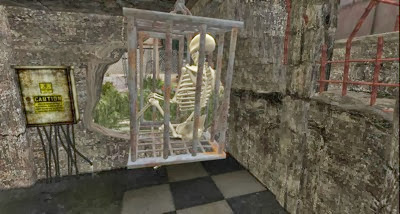

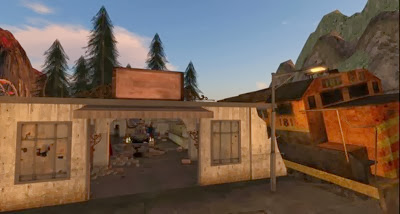

The first view of town

A less-than-quiet cemetery
Mulberry is open through Nov. 6.

Bodies laid out - but by whom?

Indications of Satanic activity?

He's just hanging around

Under the big top

The train station
Wednesday, October 16, 2013
Designing a Mouse
It's said that an elephant is a mouse designed to government specifications. The mouse, in this case, is the idea of extending health insurance to those who currently want but cannot afford it. The elephant is the jumbo-sized monstrosity known as Obamacare.
Here's but one recent example of how good intentions have gone awry, from Hotair.com's Ed Morrissey:
Obamacare has imposed all sorts of requirements on insurance plans - remember Georgetown Law School student Sandra Fluke and her demand that insurance cover her birth control pills? - that drive up costs. Keeping premiums down to an affordable level often requires deductibles that are so high the insurance plan is essentially a catastrophic coverage plan, but at the price of a Cadillac plan.
This is not to fault the idea of expanding insurance coverage. But the execution - typical of big government projects - has been horrible. People who have had satisfactory individual coverage can't keep it, employers are dropping their plans and forcing employees into the Obamacare exchanges as well as reducing the number of full-time employees. Meanwhile, the math requires that young, healthy people buy expensive insurance policies in order to subsidize older, less healthy people. What are the odds that many of them do that, rather than pay the additional tax and roll the dice?
Rather than acknowledge the shortcomings of Obamacare, the President and most Democrats in Congress are shouting that it's working as planned, no worries, things will get better, those dastardly Republicans are at fault, and oh! a squirrel!
An elephant indeed.
Here's but one recent example of how good intentions have gone awry, from Hotair.com's Ed Morrissey:
The initial shock of the premium increases and the incompetent use of $94 million...to create the world’s biggest 404 exchange are just the starting shocks of ObamaCare….[N]ot only have premiums doubled in the individual markets, the coverage has gotten worse in a very concrete way.Morrissey quotes from an article in the Chicago Tribune, in which a 33-year-old single father, a nurse practitioner with a 7-year-old daughter, faces a more than twofold increase in his $233 per month insurance premium. Alternatively, if he wants to keep costs down, he can pick a plan with a $12,700 annual deductible.
Obamacare has imposed all sorts of requirements on insurance plans - remember Georgetown Law School student Sandra Fluke and her demand that insurance cover her birth control pills? - that drive up costs. Keeping premiums down to an affordable level often requires deductibles that are so high the insurance plan is essentially a catastrophic coverage plan, but at the price of a Cadillac plan.
This is not to fault the idea of expanding insurance coverage. But the execution - typical of big government projects - has been horrible. People who have had satisfactory individual coverage can't keep it, employers are dropping their plans and forcing employees into the Obamacare exchanges as well as reducing the number of full-time employees. Meanwhile, the math requires that young, healthy people buy expensive insurance policies in order to subsidize older, less healthy people. What are the odds that many of them do that, rather than pay the additional tax and roll the dice?
Rather than acknowledge the shortcomings of Obamacare, the President and most Democrats in Congress are shouting that it's working as planned, no worries, things will get better, those dastardly Republicans are at fault, and oh! a squirrel!
An elephant indeed.
Saturday, October 12, 2013
The Party of "No"
The latest on the government shutdown and the nearing debt ceiling limit, from Politico:
I'll have to say that I'm a bit amused by how "Obamacare" - once considered pejorative by Democrats - has been embraced by Democrats and the media.
Democratic leaders in the Senate are rejecting an offer by Sen. Susan Collins (R-Maine) to end the budget impasse, arguing it asks for too much in return for too little, senators and aides tell POLITICO.
The development comes on the same day that the Senate voted 53-45 to block a Democratic bill that would raise the debt ceiling through 2014 without any spending cuts or changes to Obamacare.
The Collins plan, which was drafted with input from West Virginia Sen. Joe Manchin (D) and other senators, called for a six-month extension of government funding and a debt limit increase through January. But it asked for a delay in Obamacare’s medical device tax for two years and a requirement for income verification for Obamacare subsidies.
While it would give federal agencies more flexibility to work within the constraints of the automatic sequestration cuts, Democrats objected to the level of funding that Collins was seeking, which would lock-in the levels under the sequester at $967 billion next year, far too low for many Democrats,
Moreover, Democrats are calling for a longer-term budget deal that would raise the debt ceiling and extend government funding. And they said that agreeing to a shorter-term budget deal and a lower funding level — with a handful of changes to Obamacare — was asking too much after they have called for a “clean” increase to the $16.7 trillion national debt ceiling and a stop-gap measure to keep the government running.Clearly, Senate Democrats think they have the upper hand in the negotiations. Fair enough. At the same time, it's absurd to think that blame goes in one direction only when both House and Senate Republicans have made proposal after proposal to end the impasse, only to be told "no." Not "here's a counterproposal" or "we're not prepared to negotiate in this area but there may be some room to negotiate over here." Just "no."
I'll have to say that I'm a bit amused by how "Obamacare" - once considered pejorative by Democrats - has been embraced by Democrats and the media.
Thursday, October 10, 2013
The Flying City of Lilith
Thanks to the inimitable Dr. Rafael Fabre, I learned of a recent addition to the Steamlands: the Flying City of Lilith. The city's RP combines Victoriana, Steampunk, and magic in a fantastical setting. The creators provide background on Lilith on their web site.
After perusing the vast library [where in-world information on the RP can be obtained], I ventured into the flying city, where I met one of the creators, Mr. Ellwood407. He welcomed me to the city before returning to the hard work of constructing the setting.

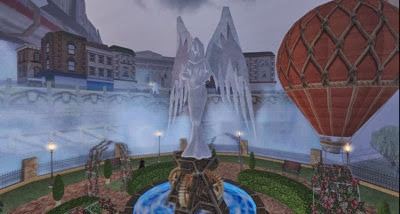

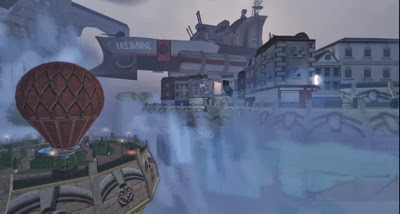
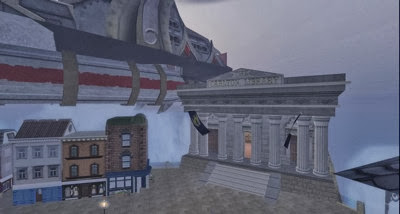
I'm told that there is even a "gentleman's club," though I wouldn't know about such things! If one existed, it might have the slightly naughty name of the Cherry Pie Gentleman's Club, and might look something like this:
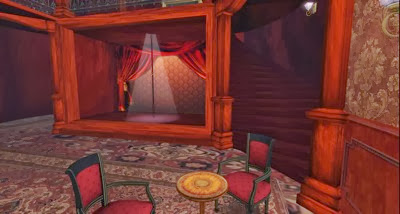
After perusing the vast library [where in-world information on the RP can be obtained], I ventured into the flying city, where I met one of the creators, Mr. Ellwood407. He welcomed me to the city before returning to the hard work of constructing the setting.





I'm told that there is even a "gentleman's club," though I wouldn't know about such things! If one existed, it might have the slightly naughty name of the Cherry Pie Gentleman's Club, and might look something like this:

Sunday, October 6, 2013
Stuck in Low Gear
Since coming back from two weeks of vacation in mid-September, I realize I've been very quiet on this Journal. Mainly, it's a matter of being mentally unable to get it back into gear. I haven't done much on my dozens - okay, hundreds - of photos from the trip, either. One day I'll manage to get things going.
In the meanwhile, I see that Duchess Eva and Seneschelf Serra have organized this year's BoobieThon in Second Life, starting today (Oct. 6) and running to the following Sunday:
In the meanwhile, I see that Duchess Eva and Seneschelf Serra have organized this year's BoobieThon in Second Life, starting today (Oct. 6) and running to the following Sunday:
The Sixth Annual BoobieThon in SL will be a fantastic, yet bittersweet, addition to this October.
Since 2008, we have been working with wonderful volunteers, artists, builders, scriptors, and donors in Second Life. We find that the time has come for us to end this particular fund-raising effort in Second Life.
It is not without regret that we have decided that this will be the last year for the BoobieThon in SL. We have found such enjoyment in getting to know survivors in our community, sharing art, builds, and irreverent pleasures as we have raised money to fight breast cancer through research, survivor support programs, and prevention education.
We thank you from the bottom of our hearts for all your support in the past 6 years and invite you to join us for the final BoobieThon, may it be the best ever!
Your Bosom Buddies,I'm sure organizing the BoobieThon has been a major time drain for both ladies, but it's a little sad to see such a wonderful event come to an end. Still, one more chance to support breast cancer research and education!
The Lady of Skye; Lady Chief of Clan Bellambi; Duchess Loch Avie, Eva Bellambi
and
Lady Twilight; Keeper of Dreams; Seneschelf of Winterfell, Serra Anansi
Tuesday, September 24, 2013
Victorian Fantasy: George MacDonald's "The Princess and the Goblin"
After a dire calamity (or possibly Real Life) caused last month's meeting of the Victorian Fantasy group - which was to be a discussion of William Morris's proto-fantasy novel The Water of the Wondrous Isles - we reconvened last Wednesday to natter on about George MacDonald's 1872 children's novel The Princess and the Goblin.
In the book, eight-year-old Princess Irene - forthright, honest, and brave, and wise beyond her years - meets her great-great grandmother, a woman of seemingly magical powers whom no one else can see, while escaping the clutches of goblins, who have vowed to seek revenge on humans for perceived mistreatment. We also encounter young Curdie, a miner's son (and a miner himself), who rescues the princess, discovers the goblins' plot, is captured and rescued by Irene, and helps save the day when the goblins finally make their move on the king and his court. (And for those who didn't get enough of Irene and Curdie, MacDonald penned a sequel, The Princess and Curdie, to continue their adventures.)
Dame Kghia noted that some critics believe the story to be a religious allegory, with the (generally unseen) grandmother as a Christ figure, Irene as a true believer, Curdie slowly converting from a non-believer to a believer, and Irene's nurse, Lootie, a foolish woman incapable of belief in what she cannot see.
I was grateful that the novel was a fairly quick read, as I had forgotten about the meeting until after I returned from vacation, a mere two days before the group met. At least the material was fresh in my mind!
We had a small but spirited group to discuss the book:

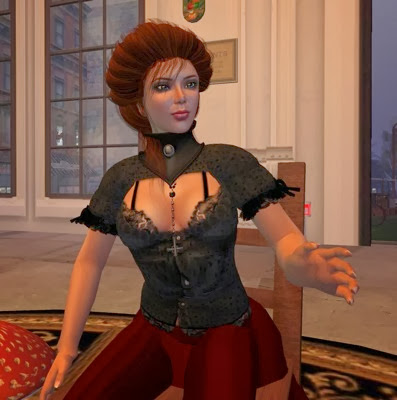
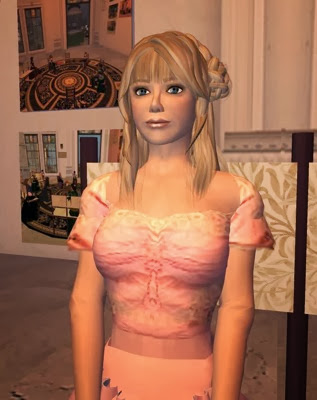
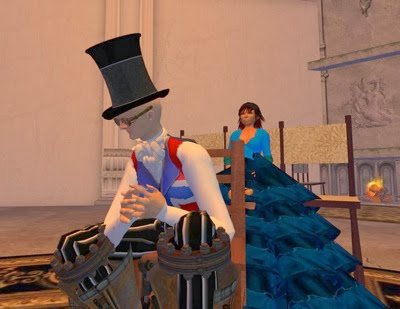

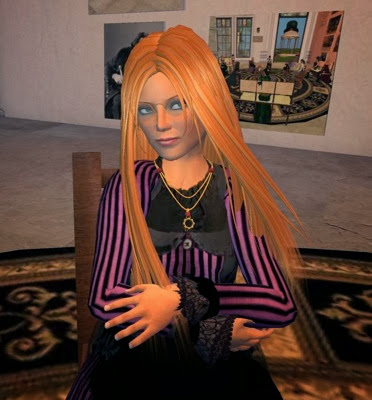
In the book, eight-year-old Princess Irene - forthright, honest, and brave, and wise beyond her years - meets her great-great grandmother, a woman of seemingly magical powers whom no one else can see, while escaping the clutches of goblins, who have vowed to seek revenge on humans for perceived mistreatment. We also encounter young Curdie, a miner's son (and a miner himself), who rescues the princess, discovers the goblins' plot, is captured and rescued by Irene, and helps save the day when the goblins finally make their move on the king and his court. (And for those who didn't get enough of Irene and Curdie, MacDonald penned a sequel, The Princess and Curdie, to continue their adventures.)
Dame Kghia noted that some critics believe the story to be a religious allegory, with the (generally unseen) grandmother as a Christ figure, Irene as a true believer, Curdie slowly converting from a non-believer to a believer, and Irene's nurse, Lootie, a foolish woman incapable of belief in what she cannot see.
I was grateful that the novel was a fairly quick read, as I had forgotten about the meeting until after I returned from vacation, a mere two days before the group met. At least the material was fresh in my mind!
We had a small but spirited group to discuss the book:

Sir JJ Drinkwater

Dame Kghia Gherardi

Miss Herndon Bluebird

Mr. Roy Smashcan and Miss Sanchia Bumblefoot

Miss Silvermane Trefusis

Your humble scribe
Next month we will cover J. M. Barrie's 1904 novel Peter Pan.
Monday, September 16, 2013
Review: Doctor Who, Destiny of the Doctor series
For the 50th anniversary year of Doctor Who, Big Finish Productions commissioned 11 stories, each featuring a different incarnation of the Doctor, tied together with an overall story arc. (Some of this is guesswork, as the last few stories have yet to be published.)
Each story is about an hour and most are narrated by one of the Doctor's companions. In each story, the Eleventh Doctor sends a message to his earlier self, making a request related to the story at hand. It seems clear that the Eleventh has problems of his own.
The stories are:
1. Hunters of Earth - Carole Ann Ford narrates the story, set in Totter's Lane and the Coal Hill School in 1963, and features Susan and the First Doctor.
2. Shadow of Death - Frazer Hines narrates and reprises his role as Jamie in this Second Doctor story (also with Zoe) set on a planet in the orbit of a pulsar. Hines does an uncanny imitation of Patrick Troughton.
3. Vengeance of the Stones - Richard Franklin narrates and is featured as a young Lieutenant (not Captain) Yates as he meets U.N.I.T. and the Third Doctor for the first time. The story is set in and among various standing stones of northeast Scotland.
4. Babblesphere - Lalla Ward is the narrator in this story, featuring the Fourth Doctor and Romana II, set on an Earth colony that is in ruins. The residents are so addicted to social networking that they've allowed themselves to become enslaved by the network's computer.
5. Smoke and Mirrors - Janet Fielding narrates the Fifth Doctor tale, with Tegan, Nyssa, and Adric joining Harry Houdini in an old fairground.
6. Trouble in Paradise - Nicola Bryant narrates and stars as Peri in the Sixth Doctor story in which Six gets a message from his future self, directing him to find and save an Omniparadox, which "contains energies capable of turning reality inside-out". I quite enjoyed the interaction between the Doctor and Peri.
7. Shockwave - Sophie Aldred narrates the Seventh Doctor story and plays Ace. The two arrive in the 49th century on a space station in the process of being evacuated from an oncoming shockwave. The Doctor has contrived to get them on the last spaceship out because, naturally, he has an ulterior motive.
8. Enemy Aliens - India Fisher narrates and plays Charley Pollard in the Eighth Doctor story.
Not out yet, but scheduled for release in September, October, and November, are:
9. Night of the Whisper, with Nicholas Briggs
10. Death's Deal, with Catherine Tate
11. The Time Machine, with Jenna Coleman.
Some of the stories are more compelling than others. I particularly liked the Third Doctor story. While I enjoyed the Fourth Doctor story, it needed more Doctor to it (and would have been great if Tom Baker had voiced the Doctor but, alas, none of the "Destiny" series uses any of the actors who played the Doctor). Nonetheless, they're all interesting stand-alone stories so far, and have whetted my appetite for hearing how the individual pieces relate to the final story.
Each story is about an hour and most are narrated by one of the Doctor's companions. In each story, the Eleventh Doctor sends a message to his earlier self, making a request related to the story at hand. It seems clear that the Eleventh has problems of his own.
The stories are:
1. Hunters of Earth - Carole Ann Ford narrates the story, set in Totter's Lane and the Coal Hill School in 1963, and features Susan and the First Doctor.
2. Shadow of Death - Frazer Hines narrates and reprises his role as Jamie in this Second Doctor story (also with Zoe) set on a planet in the orbit of a pulsar. Hines does an uncanny imitation of Patrick Troughton.
3. Vengeance of the Stones - Richard Franklin narrates and is featured as a young Lieutenant (not Captain) Yates as he meets U.N.I.T. and the Third Doctor for the first time. The story is set in and among various standing stones of northeast Scotland.
4. Babblesphere - Lalla Ward is the narrator in this story, featuring the Fourth Doctor and Romana II, set on an Earth colony that is in ruins. The residents are so addicted to social networking that they've allowed themselves to become enslaved by the network's computer.
5. Smoke and Mirrors - Janet Fielding narrates the Fifth Doctor tale, with Tegan, Nyssa, and Adric joining Harry Houdini in an old fairground.
6. Trouble in Paradise - Nicola Bryant narrates and stars as Peri in the Sixth Doctor story in which Six gets a message from his future self, directing him to find and save an Omniparadox, which "contains energies capable of turning reality inside-out". I quite enjoyed the interaction between the Doctor and Peri.
7. Shockwave - Sophie Aldred narrates the Seventh Doctor story and plays Ace. The two arrive in the 49th century on a space station in the process of being evacuated from an oncoming shockwave. The Doctor has contrived to get them on the last spaceship out because, naturally, he has an ulterior motive.
8. Enemy Aliens - India Fisher narrates and plays Charley Pollard in the Eighth Doctor story.
Not out yet, but scheduled for release in September, October, and November, are:
9. Night of the Whisper, with Nicholas Briggs
10. Death's Deal, with Catherine Tate
11. The Time Machine, with Jenna Coleman.
Some of the stories are more compelling than others. I particularly liked the Third Doctor story. While I enjoyed the Fourth Doctor story, it needed more Doctor to it (and would have been great if Tom Baker had voiced the Doctor but, alas, none of the "Destiny" series uses any of the actors who played the Doctor). Nonetheless, they're all interesting stand-alone stories so far, and have whetted my appetite for hearing how the individual pieces relate to the final story.
Tuesday, September 10, 2013
Review: Doctor Who, "Season 27"
When the televised series of Doctor Who was <s>put on hiatus</s> cancelled after 26 seasons, plans were underway for season 27.
At the time production of the original series was cancelled, work had already begun on Season 27. Both McCoy and incumbent companion Sophie Aldred (Ace) have stated that they would have left during this season. Storylines would have seen Ace joining the Time Lord academy on Gallifrey, and the introduction of a cat burglar as the new companion. Script editor Andrew Cartmel had already begun work on four loosely connected stories which would have comprised the season: Earth Aid by Ben Aaronovitch (a space opera featuring insect-like aliens), Ice Time by Marc Platt (set in 1960s London, featuring the return of the Ice Warriors and Ace's departure), Crime of the Century by Cartmel (a contemporary story featuring animal testing), and Alixion by Robin Mukherjee (in which the Doctor is lured to an isolated asteroid to play a series of life-or-death games). Ahead of the new companion's introduction, Ice Time would have featured her father, a criminal named Sam Tollinger, who was intended to be a recurring character. Alixion would have seen the Doctor going insane after facing a psychic enemy, with mental rather than physical strain being the cause of his regeneration at the end of the season. [citations omitted]Big Finish Productions, in their range of "Lost Stories," resurrected many of these ideas for a four-story "Season 27," released in 2011. Andrew Cartmel oversaw the season, which consisted of Marc Platt's "Thin Ice," Cartmel's "Crime of the Century" and "Animal," and "Earth Aid," co-authored by Cartmel and Ben Aaronovitch.
"Thin Ice" is set in 1967 in Moscow and London. The Doctor seeks Ice Warrior technology that has been stored in Moscow, primarily to keep its destructive power out of the hands of humans, but both the Russians and the Ice Warriors themselves are after the same technology. The story introduces Markus Creevy, an English grifter and his lover, Russian Lt. Raina Kerenskaya, who become the parents to future companion and cat burglar Raine Creevy. One of the subplots involves the Doctor's efforts to induce the Time Lords to accept Ace into the Academy on Gallifrey (much to Ace's displeasure when she finds out what the Doctor had in store for her). Because Ace continued as a companion in the audio dramas, the Doctor's bid was unsuccessful.
"Crime of the Century," though set in 1989, is a direct sequel to the previous story. Raine, now a young woman, is a cat burglar. We find her robbing a house safe, only to find the Doctor inside, waiting for her. At the same time, following the Doctor's instructions, Ace tracks down Raine's father, Markus, to ask him to use his connections with the underworld as she travels to a Middle Eastern country (Afghanistan, but not named Afghanistan) at war with Russia. There, Ace and the Doctor encounter warrior "demons" - the Metatraxi, who will play roles in the subsequent two stories as well.
Raine: Why does the prince need to do business at all? He's wealthy beyond the dreams of avarice.In "Animal," the Doctor, Ace, and Raine go in search of a robot from the previous story and find themselves in 2001 at Margrave University. There they encounter U.N.I.T., headed by Brigadier General Winifred Bambera (who was also heading U.N.I.T. in 1989's "Battlefield" on television). Ace and Raine go undercover, posing as students, to infiltrate a shadowy animal rights organization intent on sabotaging a research facility. Inside the facility, the Doctor encounters a carnivorous plant.
The Doctor: In my experience, dreams of avarice extend surprisingly far.
Seriously: the aliens are called the "Numlocks"? Was Cartmel stuck for a name for the aliens and found inspiration staring at his keyboard?
The season's conclusion, "Earth Aid," is the most lighthearted of the stories. It opens with Ace as the captain of the starship Vancouver, escorting a grain ship to a planet experiencing a famine. The Doctor is the ship's physician, and one of the bridge officers has a Russian accent. What's more, Ace seems to have learned everything she needed to know about captaining a starship from Star Trek, including her favorite phrase: "Make it so." (I was almost surprised when the grain ship was not filled with Tribbles in its quadratriticale.) And no, there's never an explanation for how the Doctor managed to place Ace as the captain of a starship. Boarding the grain ship, they find all but one of the crew missing. (The remaining member, Victor Espinosa, is played by Paterson Joseph, who was Rodrick, the game show participant on "The Weakest Link" with Rose in "Bad Wolf" and "The Parting of the Ways" during Eccleston's season as the Doctor.) As another ship approaches the Vancouver, the Doctor and Lt. Baraki cut open an equipment storage compartment. Inside is a safe. The Doctor cracks open the safe to find... Raine. Ace is in seventh heaven as she gets to fire missiles.
The Doctor is sentenced to "Death by taunting." "Well, that's original, I suppose," he replies.
There's an amusing reference back to "Survivor" when the Doctor, searching for an analogy for spaceships, tells Ace, "Think of it this way: you're a cheetah." Ace replies, "I almost was, once."
The tone is lighthearted all the way through, except for an annoying lecturing tone at the end, as though listeners can't be expected to get the message otherwise. The story resolves the plotline of the Metatraxi in an unexpected way.
Monday, September 2, 2013
Review: Doctor Who, "Love and War"
This double-length audio drama, based on the Paul Cornell novel from 1992, is a marvelous story that provides an emotional journey for both the Seventh Doctor and Ace. It also is young Ace's exit as a companion and introduces archaeologist Bernice Summerfield (Lisa Bowerman) as a new companion.
The plot has a number of different threads and a detailed summary would give away too much of what should be experienced. However, the Big Finish summary describes it as follows:
Once again we see that the Seventh Doctor is willing to do whatever it takes - manipulating friends, enemies, and innocent bystanders alike - to resolve a situation to his advantage. Sophie Aldred's performance as Ace is one of the highlights of the production.
The plot has a number of different threads and a detailed summary would give away too much of what should be experienced. However, the Big Finish summary describes it as follows:
On a planet called Heaven, all hell is breaking loose.
Heaven is a cemetery for both humans and Draconians - a final place of rest for those lost during wartime. The Doctor arrives on a trivial mission - to find a book, or so he says - and Ace, wandering around Joycetown, becomes involved with a charismatic Traveler called Jan.
But the Doctor is strenuously opposed to the romance. What is he trying to prevent? Is he planning some deadly game connected with the coffins revered by the mysterious Church of Vacuum and the unusual Arch that marks the location of a secret building below ground?
Archaeologist Bernice Summerfield thinks so. Her destiny is inextricably linked with that of the Doctor, but even she may not be able to save Ace from the Time Lord's plans.
This time, has the Doctor gone too far?The story takes a while to develop and for the listener to understand how the different plot threads come together, but ultimately leads to a satisfying conclusion. The double-length format allows for both multiple plot lines and a little more examination of each of those plot lines than in shorter Big Finish drama, though less so than in a full novel.
Once again we see that the Seventh Doctor is willing to do whatever it takes - manipulating friends, enemies, and innocent bystanders alike - to resolve a situation to his advantage. Sophie Aldred's performance as Ace is one of the highlights of the production.
Wednesday, August 28, 2013
If You Want to be an Undercover Organization...
… don't drive an SUV with "Torchwood" emblazoned on it. This might give people a clue.
(Advice coming a little late, I realize.)
(Advice coming a little late, I realize.)
Saturday, August 24, 2013
Cooger and Dark's Wax Museum and Chamber of Horrors
As I wandered through Babbage Square, my eyes were drawn to the hands emerging from the pavement. They turned out to be part of Cooger and Dark's Wax Museum. Naturally, I needed to see what was inside.
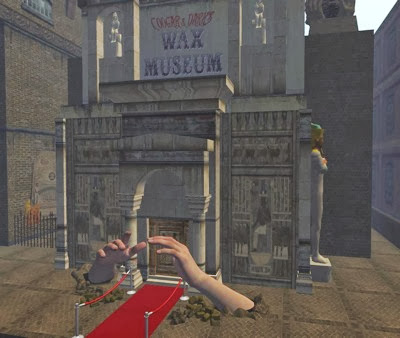
The museum has exhibits of famous individuals in horror and the occult. Below, H. P. Lovecraft...

… and Aleister Crowley...

… and the Babbage Cuckoos. Well, doubtless a part of New Babbage history of which I am woefully ignorant.
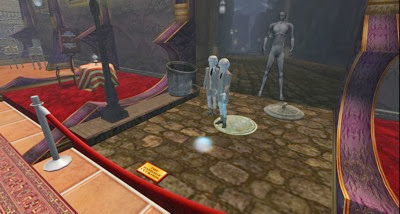
Attached to the wax museum is a Chamber of Horrors. Most of these pictures need no explanation.
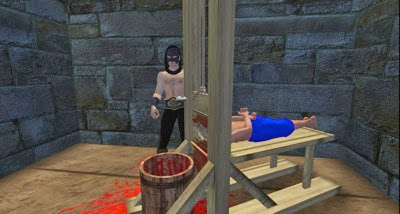
This lad below, however, bears an uncanny resemblance to the mastermind behind both the wax museum and the chamber of horrors, young Jimmy Branagh.

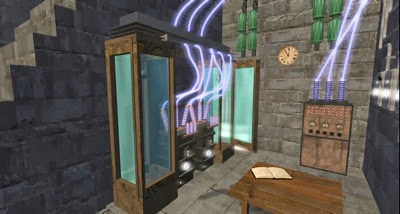
Master Jimmy noted that there would be a Grand Re-Opening shortly, with a DJ and dancing for those with a left and a right foot, and a bar for those who have been manufactured with two left (or right) feet.

The museum has exhibits of famous individuals in horror and the occult. Below, H. P. Lovecraft...

… and Aleister Crowley...

… and the Babbage Cuckoos. Well, doubtless a part of New Babbage history of which I am woefully ignorant.

Attached to the wax museum is a Chamber of Horrors. Most of these pictures need no explanation.

This lad below, however, bears an uncanny resemblance to the mastermind behind both the wax museum and the chamber of horrors, young Jimmy Branagh.


Master Jimmy noted that there would be a Grand Re-Opening shortly, with a DJ and dancing for those with a left and a right foot, and a bar for those who have been manufactured with two left (or right) feet.
Tuesday, August 20, 2013
Applying Economics to Restaurant Costs
In episode 53 of the Unprofessional podcast, Dave Wiskus, Lex Friedman, and John Gruber interrupt an otherwise-entertaining discussion about chain restaurants to display both their liberal biases and faulty reasoning.
They "boycott" (if only one person does it, I'd call it "choose not to eat at") restaurants that have announced cutbacks in employee hours to avoid triggering Obamacare obligations to provide health benefits. They repeat the already-debunked claim that McDonald's could afford to double employee pay by increasing prices by a mere 17%, and they assert without evidence that Papa Johns pizza, to take one example, could easily increase pizza prices enough to pay for employee health benefits because rich guys like Wiskus, Friedman, and Gruber would gladly pay the extra.
Problem one: if Papa John's could raise prices without losing many customers to other pizza places, other fast-food options, or just eating in more often, presumably they'd raise prices already. The essence of profit-maximization is that further increases in price would be unprofitable because the additional profit from the higher revenue from customers who stick with you is outweighed by the lower profit from the loss of revenue from customers who leave. This fundamental fact doesn't magically go away when the scenario includes the opportunity to raise your own costs as well.
Problem two: the assumption that a price increase of "only" 17% (estimated to be more like 25% if done properly) wouldn't result in substantial numbers of people eating elsewhere is a rich person's assumption. A Big Mac meal is listed as $5.69, so a single person would face a price increase of $0.97 (at 17%) to $1.42 (at 25%), while a family of four eating two Big Mac meals and two Happy Meals (4 pieces Chicken McNuggets at $2.99) would pay between $2.95 (at 17%) and $4.34 (at 25%) for that meal. One paper summarizes studies on demand elasticities for a variety of food choices. Estimates for "Food away from home" range from 0.23 to 1.76, with a mean of 0.81. That is, a 10% price increase would lead to an 8% decline in purchases of food away from home. But that's for the industry as a whole. Demand elasticity for an individual restaurant is likely to be substantially higher, well in excess of one, as many other restaurants offer similar choices. Fast-food restaurants, whose demographics likely include far more lower-income customers than higher-end restaurants, are likely to have higher demand elasticity than other choices for dining out.
So feel free to boycott any restaurant you like. Your decision won't change fundamental economic facts.
They "boycott" (if only one person does it, I'd call it "choose not to eat at") restaurants that have announced cutbacks in employee hours to avoid triggering Obamacare obligations to provide health benefits. They repeat the already-debunked claim that McDonald's could afford to double employee pay by increasing prices by a mere 17%, and they assert without evidence that Papa Johns pizza, to take one example, could easily increase pizza prices enough to pay for employee health benefits because rich guys like Wiskus, Friedman, and Gruber would gladly pay the extra.
Problem one: if Papa John's could raise prices without losing many customers to other pizza places, other fast-food options, or just eating in more often, presumably they'd raise prices already. The essence of profit-maximization is that further increases in price would be unprofitable because the additional profit from the higher revenue from customers who stick with you is outweighed by the lower profit from the loss of revenue from customers who leave. This fundamental fact doesn't magically go away when the scenario includes the opportunity to raise your own costs as well.
Problem two: the assumption that a price increase of "only" 17% (estimated to be more like 25% if done properly) wouldn't result in substantial numbers of people eating elsewhere is a rich person's assumption. A Big Mac meal is listed as $5.69, so a single person would face a price increase of $0.97 (at 17%) to $1.42 (at 25%), while a family of four eating two Big Mac meals and two Happy Meals (4 pieces Chicken McNuggets at $2.99) would pay between $2.95 (at 17%) and $4.34 (at 25%) for that meal. One paper summarizes studies on demand elasticities for a variety of food choices. Estimates for "Food away from home" range from 0.23 to 1.76, with a mean of 0.81. That is, a 10% price increase would lead to an 8% decline in purchases of food away from home. But that's for the industry as a whole. Demand elasticity for an individual restaurant is likely to be substantially higher, well in excess of one, as many other restaurants offer similar choices. Fast-food restaurants, whose demographics likely include far more lower-income customers than higher-end restaurants, are likely to have higher demand elasticity than other choices for dining out.
So feel free to boycott any restaurant you like. Your decision won't change fundamental economic facts.
Friday, August 16, 2013
Review: Doctor Who, "Human Resources, Parts 1 and 2"
The finale of the first season of the Eighth Doctor's adventures with Lucie Miller picks up where "No More Lies" left off: Lucie has been kidnapped by the Headhunter and separated from the Doctor. She finds herself in a new job with Hulbert Logistics in Telford. But something isn't right. Perhaps it's the fact that she can't leave the building, or even that she has no recollection of getting the job and arriving at work. Meanwhile, the Doctor, looking for her, has an encounter with an unfamiliar Time Lord. The TARDIS won't work without Lucie in it; the Time Lord offers to fix the TARDIS if the Doctor returns Lucie, and gives the Doctor a time ring in the interim.
The Doctor arrives at Lucie's "firm" and ends up in a job, whereupon he finds himself giving advice on how to execute a military raid. Later, he poses as a new client for Mr. Hulbert, the head of the firm, which specializes in using war machines to invade planets, using brainwashed humans to run the operations. Lucie is fired from the firm and ejected from the war machine, where she and some former employees find themselves in a fight for survival. Meanwhile, Hulbert invites the Doctor to a reception on his latest planetary conquest, where prospective clients can get testimonials from satisfied former clients. The Doctor discovers some familiar faces...
In Part 2, Lucie discovers a strange object under the floor inside the war machine. The Doctor recognizes it as a quantum crystalizer.They go back to his TARDIS in order to resolve the Doctor's suspicions about the quantum crystalizer. Lucie hears the truth about how the Time Lords manipulated her life.
The story has a number of good lines, often delivered by Lucie.
The Doctor arrives at Lucie's "firm" and ends up in a job, whereupon he finds himself giving advice on how to execute a military raid. Later, he poses as a new client for Mr. Hulbert, the head of the firm, which specializes in using war machines to invade planets, using brainwashed humans to run the operations. Lucie is fired from the firm and ejected from the war machine, where she and some former employees find themselves in a fight for survival. Meanwhile, Hulbert invites the Doctor to a reception on his latest planetary conquest, where prospective clients can get testimonials from satisfied former clients. The Doctor discovers some familiar faces...
In Part 2, Lucie discovers a strange object under the floor inside the war machine. The Doctor recognizes it as a quantum crystalizer.They go back to his TARDIS in order to resolve the Doctor's suspicions about the quantum crystalizer. Lucie hears the truth about how the Time Lords manipulated her life.
The story has a number of good lines, often delivered by Lucie.
The Doctor to Lucie: "I'm hoping to annoy someone. You can find out an awful lot by being annoying."and
Lucie: I bet it's like riding a bike.and
Malcolm: I nearly got hit by a car when I was out and riding my bike.
Lucie: [Gives an exasperated sigh.] Well, I'll bet it's like something else that's easy to pick up again if you haven't done it for a while.
The Doctor: It's a quantum crystalizer.Good stuff. One interesting side note: Andy Wisher (playing Malcolm) is the son of Michael Wisher, Davros in "Genesis of the Daleks" (as well as a number of other Doctor Who characters).
Lucie: As a rule of thumb, Doctor, if you can't get it in a catalogue, you probably need to explain it to me.
Monday, August 12, 2013
Catching Up
This Journal has been a little quiet of late for the usual variety of reasons, most of which can be summarized as: "Life happens." I submitted a story to the good folks assembling Tales of New Babbage, Vol. 3. At more than 6,000 words, it's the longest thing I've written in years. Let's hope they like it. I've been preparing for a trip at the end of the month, which also means not much will get posted in September, either. I've been wading through this month's reading for the Victorian Fantasy group, William Morris's The Water of the Wondrous Isles, an extremely long fantasy quest/romance, written in the style of much older Arthurian legends, so it's especially tough sledding. Back problems. General lethargy. As I said, life happens.
I've also been catching up on classic Doctor Who stories. Since my last post on the various episodes I had seen, I did a fair amount of infilling from the Fourth Doctor onward. I've now seen all of the Fourth Doctor's episodes with the exception of "Terror of the Zygons," which is currently unavailable on DVD or on iTunes but will be re-issued this fall. I've seen all of the Fifth and Sixth Doctors' stories, and I'm about halfway through the Seventh Doctor's tenure in the TARDIS. (For some reason, the BBC removed "Battlefield" from its catalogue, so I might have to suffer through a horrible-quality bootlegged version on YouTube.) Some good, some bad, and some ugly stories in the mix. I wasn't sold on Peter Davison's Doctor initially, but he grew on me. His Doctor exudes a quiet confidence whatever the situation, and Davison's acting elevates the story above the sometimes weak writing. I was a little afraid to get into the Colin Baker era after all the negative things I'd heard about his portrayal of the Doctor and the terrible episodes of the time, so I was pleasantly surprised to find myself enjoying Baker's gruff, blustery take on the character. Yes, the costume was horrible to behold, the writers never let Peri's character develop, and some of the stories were, indeed, embarrassingly bad. (I'm looking at you, "Mark of the Rani," "The Twin Dilemma," and Peri's swan song, "Mindwarp.") But Baker was solid in the role, some of the stories were reasonable, and even the much-maligned "Trial of a Time Lord" business in Season 23 wasn't too terrible, though I could have done without the "trial" and stuck with traditional stories, and the resolution of Peri's story - married off to a barbarian warlord - was nauseating. The Sylvester McCoy era doesn't start on a promising note, with the terrible "Time and the Rani," followed by the girl gangs of "Paradise Towers" - lots of good stuff in there, but it looked cheesy - and the kitsch of "Delta and the Bannermen" (the soundtrack to that story, with its awful 1980s music constantly intruding, as though the DVD had suddenly switched to "BJ and the Bear," was the worst part), but McCoy is a terrific Doctor and the stories get much better.
I'll eventually fill in some of the stories I haven't yet seen from the earlier years - "Inferno" and "The Daemons" come to mind from the Pertwee era, and I'm sure there are others - but I'm pretty happy having almost 22 seasons of travels in time and space rattling around in my brain.
Then there's the decade-plus of audio adventures...
I've also been catching up on classic Doctor Who stories. Since my last post on the various episodes I had seen, I did a fair amount of infilling from the Fourth Doctor onward. I've now seen all of the Fourth Doctor's episodes with the exception of "Terror of the Zygons," which is currently unavailable on DVD or on iTunes but will be re-issued this fall. I've seen all of the Fifth and Sixth Doctors' stories, and I'm about halfway through the Seventh Doctor's tenure in the TARDIS. (For some reason, the BBC removed "Battlefield" from its catalogue, so I might have to suffer through a horrible-quality bootlegged version on YouTube.) Some good, some bad, and some ugly stories in the mix. I wasn't sold on Peter Davison's Doctor initially, but he grew on me. His Doctor exudes a quiet confidence whatever the situation, and Davison's acting elevates the story above the sometimes weak writing. I was a little afraid to get into the Colin Baker era after all the negative things I'd heard about his portrayal of the Doctor and the terrible episodes of the time, so I was pleasantly surprised to find myself enjoying Baker's gruff, blustery take on the character. Yes, the costume was horrible to behold, the writers never let Peri's character develop, and some of the stories were, indeed, embarrassingly bad. (I'm looking at you, "Mark of the Rani," "The Twin Dilemma," and Peri's swan song, "Mindwarp.") But Baker was solid in the role, some of the stories were reasonable, and even the much-maligned "Trial of a Time Lord" business in Season 23 wasn't too terrible, though I could have done without the "trial" and stuck with traditional stories, and the resolution of Peri's story - married off to a barbarian warlord - was nauseating. The Sylvester McCoy era doesn't start on a promising note, with the terrible "Time and the Rani," followed by the girl gangs of "Paradise Towers" - lots of good stuff in there, but it looked cheesy - and the kitsch of "Delta and the Bannermen" (the soundtrack to that story, with its awful 1980s music constantly intruding, as though the DVD had suddenly switched to "BJ and the Bear," was the worst part), but McCoy is a terrific Doctor and the stories get much better.
I'll eventually fill in some of the stories I haven't yet seen from the earlier years - "Inferno" and "The Daemons" come to mind from the Pertwee era, and I'm sure there are others - but I'm pretty happy having almost 22 seasons of travels in time and space rattling around in my brain.
Then there's the decade-plus of audio adventures...
Thursday, August 8, 2013
A Visit to Calas Galadhon
I saw in Miss Inara Pey's aetheric journal that the region of Calas Galadhon would be closing temporarily at the end of July. When it reopens, the thirteen-sim region will likely shrink. Having walked its tranquil paths before, I paid one more visit to the area before the closure.
The first three pictures below are from the Calas Galdhon sim itself:
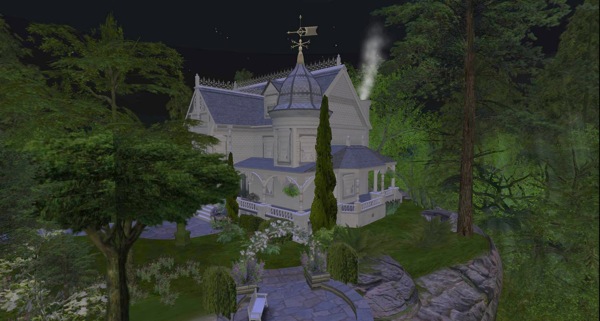

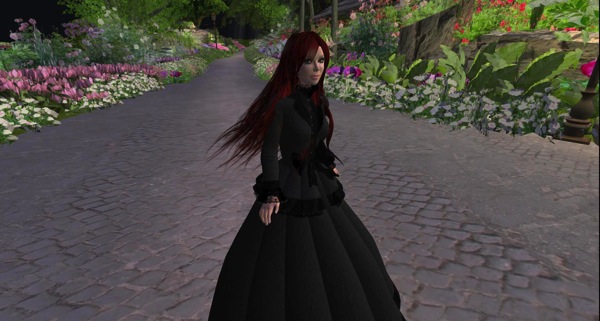
The next three pictures are from the Dimrill Dale sim, adjacent to Calas Galadhon. The church interior, directly below, might be the nicest such interior I've encountered.
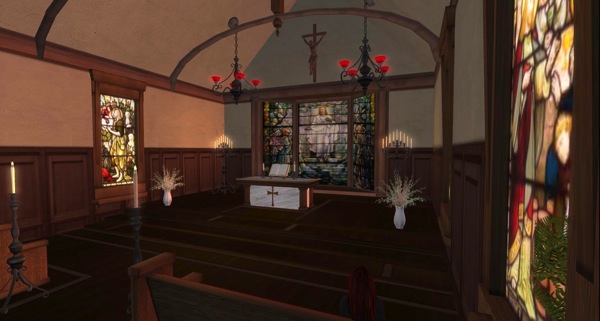


I look forward to seeing what the sim owners have in store when it reopens.
The first three pictures below are from the Calas Galdhon sim itself:



The next three pictures are from the Dimrill Dale sim, adjacent to Calas Galadhon. The church interior, directly below, might be the nicest such interior I've encountered.



I look forward to seeing what the sim owners have in store when it reopens.
Subscribe to:
Posts (Atom)